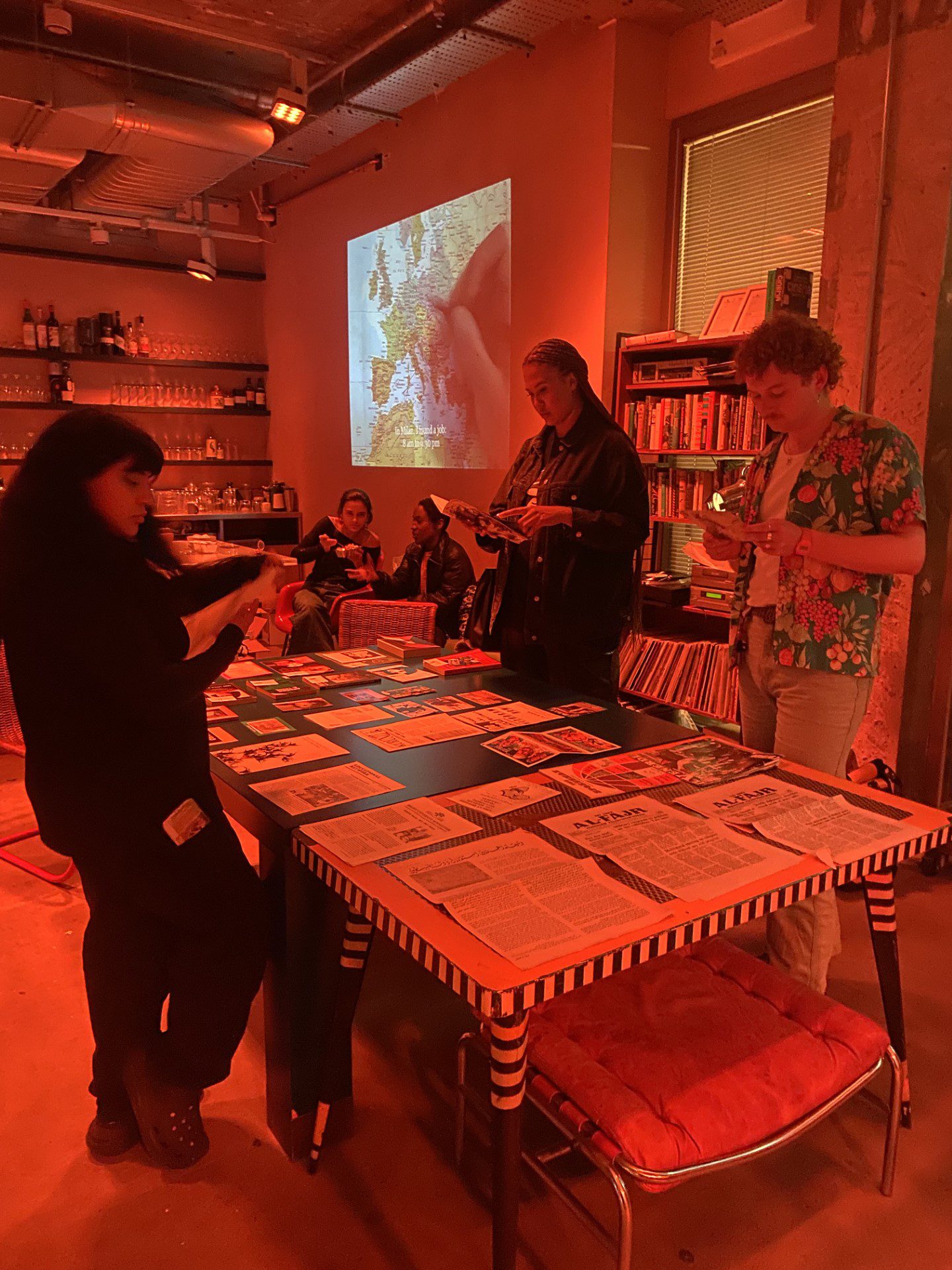
Uncovering the Archive, July 2023.
How do we mark the passing of time? Ageing or getting older is a privilege as it gives us the opportunity to take stock of what has been achieved, to bring people together to acknowledge the here and now and also to make plans for the future. In the artworld, turning 30 is still considered to be young and possibly even just emerging, so as we look back, we must also look forward.
There can be no doubt that the ‘black phoenix’ of INIVA has risen out of the ashes of the disastrous Roundhouse Project, that it has drawn from the vision and struggle of many who have been forced to remain outside the art system: yet is it also just coincidence that INIVA is coming up when that tainted and ossified Commonwealth Institute is coming down? INIVA is another chance to start again! –
Nikos Papastergiadis (1993) Disputes at the boundaries of ‘new internationalism’, Third Text, 7:25, 95-101.
iniva’s first board meeting took place in February 1994 and shortly thereafter, A New Internationalism, the inaugural conference took place at Tate Gallery on Millbank (now Tate Britain). Prior to these events many people had been involved in imagining the potential of an institution that addressed Internationalism as a position that went beyond the rhetoric of multiculturalism. In 1985 The Roundhouse Project was set up by the Greater London Council to establish a ‘black’, international and multidisciplinary arts centre. The Project collapsed for lack of funds for completion, however Sandy Nairne – Director of Visual Arts at The Arts Council at the time was instrumental in directing money towards what iniva was to become. Three experimental platforms were created in the early 1990s alongside the research of artist & consultant Gavin Jantjes and Sarah Wason from the London Arts Board to consider the kind of work a non-eurocentric institution could foster.
How might ‘artists of colour’ challenge conventional notions of how to build an institution? They brought together many active artists who were busy making work, organising exhibitions, making publications and forming networks. Rasheed Araeen (Black Umbrella/Kala Press), Eddie Chambers and Sunil Gupta (Organisation of Visual Arts) were three artists given the opportunity to create iniva franchises for artistic research, to test out the work iniva could support. These franchises were established to think through exhibitions, publishing and education.
The formation of iniva was the work of many hands but primarily built upon the years of self-organising by numerous artists who wrote letters to funding and organising bodies, held archives in their basements, organised exhibitions, conferences and meetings that spoke to a burgeoning scene that they could see around them. These artists have been fundamental in telling their own histories but have also created wider paths for other artists and their communities. iniva owes its genesis to the pre-history of the many artists that were involved in the political, social and artistic movements of the late 70s and 80s, which demanded an urgent redress of the way artists could speak about the politics of difference within publicly funded spaces.
It is because of this artistic labour at the intersection of cultures, informing the social and political nature of how we come together, that we are committed to invest in the futures of art, artists and communities. We have an incredibly rich programme of artists to celebrate our thirtieth year. You can still see Dharma Taylor’s Material Speaks (until 26 April) research and exhibition at the Stuart Hall Library that sensitively addresses how you might capture memory through textiles and objects. Six artists have been commissioned for Unseen Guests, our post-national digital pavilion to entangle anti-colonial events, pan-african archives and testimonies of climate change. We are excited to see the work of the final Future Collect commissioned artist Maria Amidu, whose exhibition, in the perpetual back and forth (3 May – 27 August), takes place at Towner Eastbourne. Look out for forthcoming announcements of our programmes as we progress throughout the year.
Our desire is that everyone should know the global histories and legacies that have contributed to Internationalism and the Black British arts movement and invest in its future. Our approach to work is care-led and mindful of our relationships so that it reflects our values of community, care, collaboration, education, justice, accessibility and joy.
We thank you for your ongoing support and hope that you can join us to celebrate turning 30 and that you will continue to inspire and challenge us to tell new stories for the future.
#iniva30